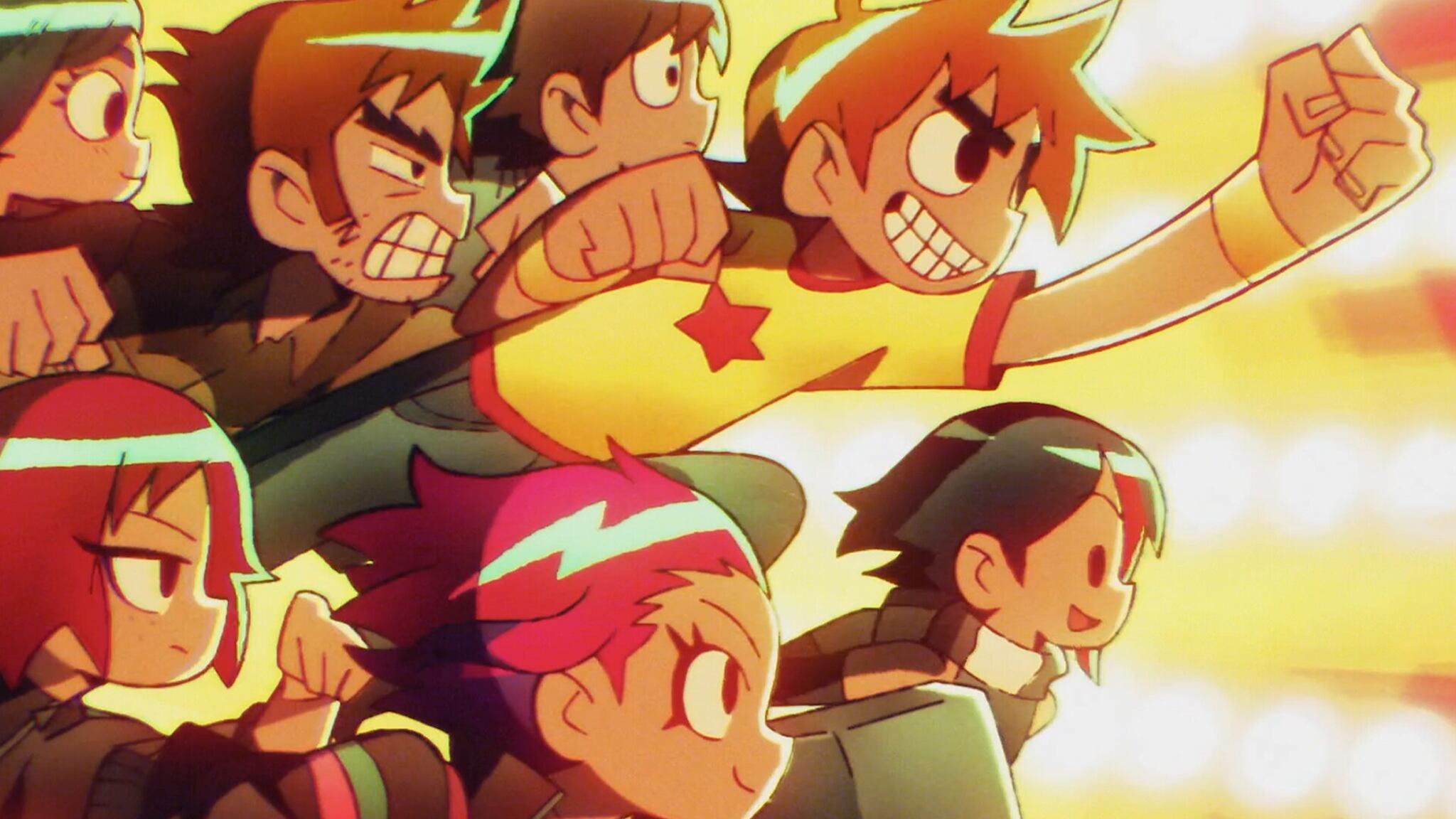Hollywood is an industry built to cycle through trends and fads, and among the current big concepts inundating mainstream media are stories about the multiverse. Sci-fi blockbusters, adult animation, and even Oscar-winning spectacles have indulged in the concept of alternate timelines and parallel realities.
You can blame it on the rise of superhero movies, but the whole exercise can’t help but read as a reaction to an entertainment landscape dominated by remakes, reboots and franchise IP. Whether it’s Doctor Who or Doctor Strange, Star Trek or Space Jam, audiences are acutely aware of how much their favorite movies and shows are regurgitations of someone’s nostalgia, whether it’s their own or otherwise.
But lo, a new challenger approaches: Scott Pilgrim Takes Off, a re-adaptation of the indie comic favorite, this time in anime form. If you’re unfamiliar with Bryan Lee O’Malley’s magnum opus (published by Portland’s own Oni Press), the story follows its titular protagonist, a 23-year-old Torontonian slacker who becomes infatuated with Ramona Flowers, the neon-haired new girl in town.
However, Ramona arrives with baggage in the form of the League of Evil Exes: seven of her former paramours who have made it their mission to dictate the course of her love life. In order to date Ramona, Scott must defeat the exes in Street Fighter-esque brawls and, in doing so, find some semblance of maturity and perspective in himself.
Scott Pilgrim’s blend of mumblecore humor and manga action made it a favorite among graphic novel aficionados, culminating in a film adaptation in 2010. Sadly, Scott Pilgrim vs. the World fell short of box office expectations, but the all-star cast, visual spectacle, and direction from geek god Edgar Wright made the project a cult classic almost instantly.
Nine years later, anime studio Science SARU approached O’Malley about bringing Scott, Ramona, and all their friends (and enemies) to the small screen in cartoon form. The result of their collaboration is the eight-episode Scott Pilgrim Takes Off, now streaming on Netflix. Although advertised as a truer-to-the-text adaptation of the graphic novels, O’Malley and co-writer BenDavid Grabinski instead deliver a deconstruction of the material that reads as a writer addressing the shortcomings of his own best-known work.
The show’s premiere episode is a speedrun through the first act of Scott’s story as he meets Ramona, asks her out, and learns about the League. However, as the episode climaxes with Scott’s duel against the first evil ex, the real meaning of the title is revealed as Scott Pilgrim takes off—as in, exits the story. He is immediately killed, leaving behind only $2.10 Canadian and some very confused friends (and audience members).
At this point, the story becomes the tale of Scott’s supporting cast as they soldier on in his absence. New passions are discovered and, in a meta twist, a biopic of Scott’s “precious little life” is commissioned, all while the evil exes find themselves adrift with their mission “accomplished.” However, the most significant story is that of Ramona herself, who believes there’s more to Scott’s death than meets the eye and sets out to learn exactly what became of her beloved bumbling bassist.
Takes Off caught many a viewer off-guard, but once you know what game you’re playing, it becomes a fascinating journey as O’Malley applies a new sense of empathy and care to a series he wrote 20 years ago. Ramona’s story remains the most significant element; while not exactly passive in the original narrative, Ramona spent most of her time acted upon by Scott or the exes. Takes Off puts her in the driver’s seat, giving her control of her own story as she becomes the one to fight for Scott, even though she’s only been on one date with him.
What’s more, Scott Pilgrim Takes Off opts to give our villains more depth and complexity. Since Ramona figures the likeliest suspects in Scott’s disappearance are her evil exes, it forces her to actually talk to them outside the context of fighting for her love life and settle whatever unfinished business they have. There’s still some spectacular action set pieces (a brawl in a video store that sends our contenders into different movie landscapes as they fight is a standout), but the core of it is humanizing the exes, uncovering the insecurities, and offering the possibility of redemption (or at least a healthier pastime than plotting revenge).
There are still more twists and turns and celebrity guest stars before the credits roll in Episode 8, but Scott Pilgrim Takes Off maintains the action, humor and style that made O’Malley’s work so beloved. In a media landscape that bends over backward to cater to fans, Takes Off instead takes its source material to task and emerges sharper and more nuanced because of it. It doesn’t dismiss the original series or the movie, but shines as a companion piece to them and proves it’s never too late for an old nerd to learn new tricks.
SEE IT: Scott Pilgrim Takes Off streams on Netflix.
